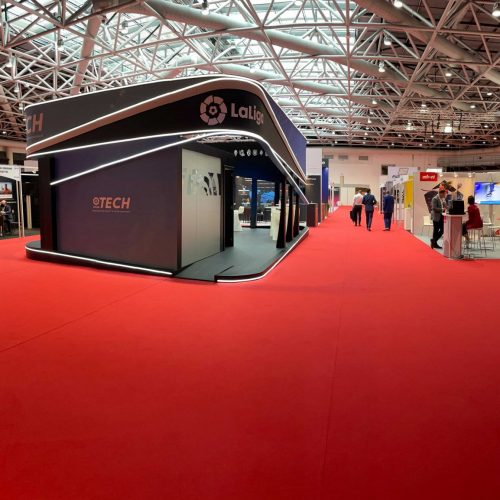Exploring The Developing Uses Of IoT In Sports
By Ellie Coverdale
The Internet of Things, also referred to as the IoT, is an area in which a lot of rapid development has occurred across the last decade. It represents the advancing of technology into the next level of integration, of utility. Before we can fulfil the sci-fi notions of television streamed directly into our brains, the IoT is gently introducing us to the true power of network. How can objects be enhanced by connectivity? How can that connectivity enhance our lives? It’s already been proven to be immensely valuable in items like the smartphone, a near ubiquitous tool these days. But it can be taken further and further, from talking toasters to money saving, self-regulating heating. One field in which the IoT is making a surprising impact is in sport. Athletes and sports organisations are incorporating the IoT into many of their daily activities. Can’t picture it? Let’s take a look at some examples.
Connected Footwear
Almost all sport relies heavily on feet. They are invaluable parts of an athlete’s physical makeup and how they are used can influence the outcome of all sorts of different scenarios. “Monitoring movement is something which can be of huge importance to coaches and the like. With IoT wearable devices that can be in the shoes, coaches can track speed, agility, movement and more with ease”, explains Jake Darnell, sports writer at EssayRoo and BigAssignments. Movement, and especially efficiency of movement, is a vital concept in sport that can be benefited by drawing in as much specific data as possible.
IoT Wardrobe
Though the feet are of particular importance to athletes of all different types, other areas of the body play a huge part in sports. If you can monitor the movement, efficiency and speed of the feet so well, then why not continue that concept into the rest of the wardrobe. One excellent example of this concept is the wearable shirt with a sensor embedded in the chest. Having a chest sensor opens up all sorts of opportunities to monitor performance: from lung usage, to heartrate. These stats can help to inform athletes on what they need to do to get the best possible results moving forward.
Shot Tracking
Many sports involve propelling a ball of some sort towards a goal. These sports will always have an emphasis on a player’s ability to complete that task as a metric for quality. However, there are lots of different, more specific things to look at when you think about ‘shooting’. “A smart net in soccer, for example, could take data from 10 iterations of the same shooting drill to come to conclusions about how hard the ball is being it when it is connecting to the prime locations in the goal mouth, top right corner for example”, explains Sarah Kim, tech blogger at OxEssays and AustralianHelp.
Fitness
If you aren’t in the sports world already, this is an area that you probably will have had some exposure to nevertheless. IoT for fitness has a large consumer facing side that includes all manner of smart watch, smart bracelet etc. The end result is that IoT is very effective for fitness monitoring purposes, where tracking devices can store and upload data on how you are doing whist integrated into a subtle physical object.
Sports Fan Experience
Smart stadiums are inevitable and are already being developed as ways to enhance the experience of viewing a game. Picture screens at each seat with live statistics on the athletes and the game, updates on events happening at the same time and connections between fans on different sides of the stadium. Even coaches being able to communicate with fans to get their morale up. These are all possibilities that are already being put into application in various stadiums around the world with exciting and unexpected results. The fan experience will certainly be changed by the IoT.
Conclusion
Yet again, the IoT has a big influence on another industry. This time, it’s admittedly slightly less obvious how that influence would manifest itself. Hopefully you’ve been able to see all of the potential and current ways in which these changes could make a difference to the sporting world.
Ellie Coverdale works as a sports writer for UKWritings and BoomEssays. She loves sharing her insights and expertise on contemporary sports practice and experimental ways to achieve goals. She also teaches writing classes at Academized.
About author
You might also like
SPORTEL Monaco 2021: CEO Laurent Puons praises event
The second day of SPORTEL 2021 got underway this morning in Monaco. Following on from yesterday’s masterclasses, Wednesday played host to a number of conference talks from industry-leading professionals. The
SPORTEL 2021: Day One Recap
This year’s prestigious SPORTEL convention kicked off in sunny Monaco today, welcoming a host of familiar faces as well as plenty of new ones. Doors opened at 8:30am with businesses
SPORTEL 2021: Monaco prepares to host prestigious October convention
After a one-year hiatus due to the impact of COVID-19, the world-renowned sports media and tech convention, SPORTEL, returns to host its annual event in Monaco. The conference will take








